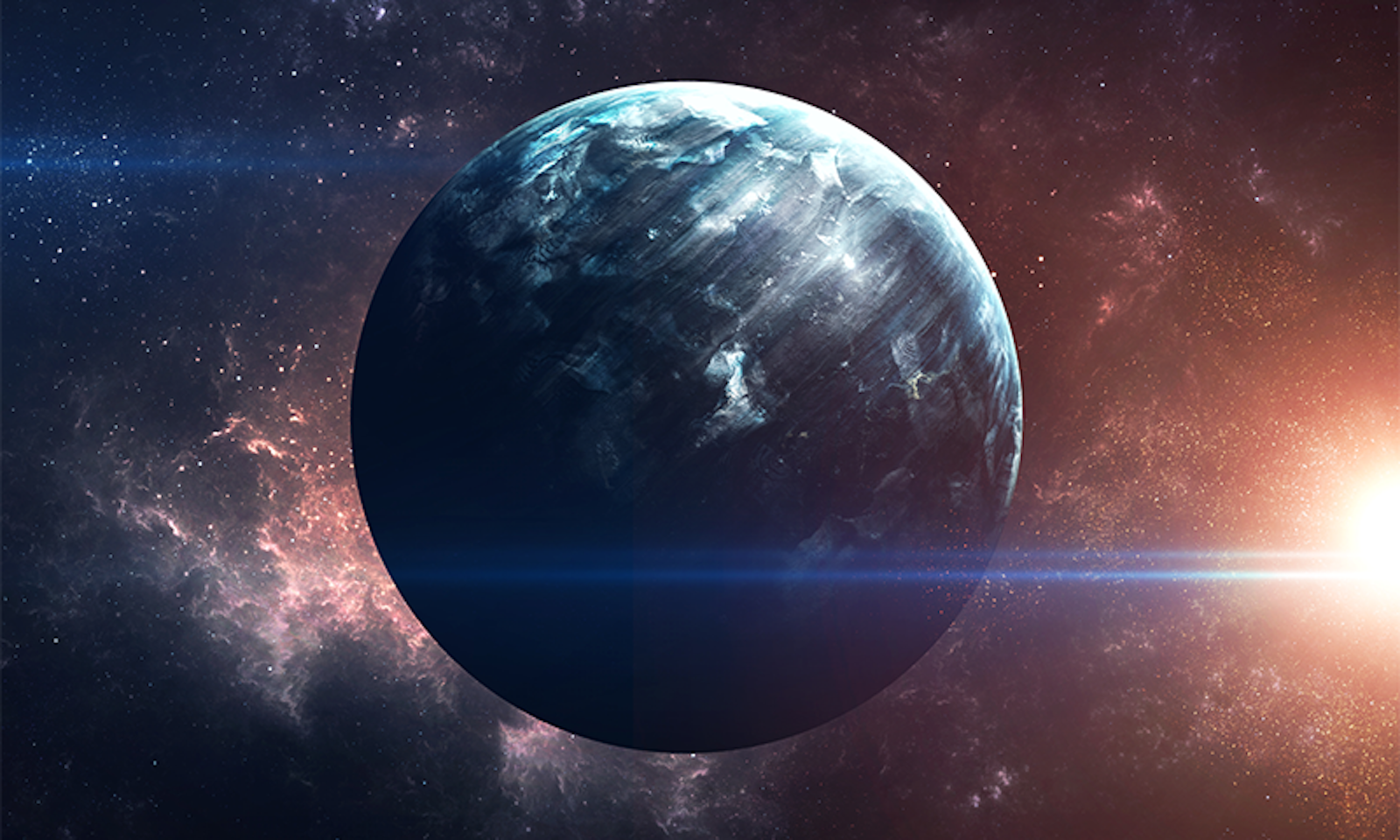For eight years, astronomers have hunted for a mysterious “Planet Nine” on the edges of our solar system. Although no one’s ever seen it, they’ve deduced its presence from observations of unusual clustering among asteroids found in the Kuiper Belt, a donut-shaped region of icy objects that is home to Pluto and most of the dwarf planets.
The Planet-Nine proponents argue that anomalies in the orbits of these so-called Kuiper Belt Objects are caused by the gravitational pull of the hidden Planet Nine—supposedly an ice giant up to 10 times as massive as Earth—as it traces an unusual, highly elongated orbit through our outer solar system. And they say that centuries of telescope observations have missed it because it’s so far away—up to 30 times farther from Earth than Pluto—although dozens of teams around the world are involved in the search. In much the same way, anomalies in the orbit of Uranus led to the discovery of Neptune in 1846.
But now, a pair of researchers say they’ve gathered evidence that a controversial theory of gravity called Modified Newtonian Dynamics (MOND) can just as easily account for the strange orbits of the Kuiper Belt Objects. MOND was developed in the 1980s as an alternative way to explain discrepancies between general relativity and what astrophysicists were observing in galaxy-scale dynamics. However, it has remained a scientific underdog ever since.
“We took the theory, and boom—it explained all of these things,” says astrophysicist Harsh Mathur from Case Western Reserve University. “We didn’t tweak it in any way.” Mathur and his co-author Katherine Brown, a theoretical physicist at Hamilton College, published their observations in a study in The Astronomical Journal. If MOND is correct, the researchers say, the Kuiper Belt Objects are pulled not by Planet Nine but by the gravity of the tens of millions of stars packed into a dense core in the Milky Way.
MOND proposes that gravitational forces deviate from Newton’s and Einstein’s predictions. According to MOND, these deviations become significant only on galactic scales, and can explain many phenomena we currently attribute to dark matter. If MOND is correct, dark matter doesn’t exist.
We took the theory, and boom—it explained all of these things.
“I’m definitely not ready to say ‘I believe in MOND,’” says Brown. But “I believe in the analysis we did—and that analysis shows MOND is as good at explaining” the orbits of the Kuiper Belt Objects, as a hypothetical Planet Nine.
Most astronomers prefer the theory of dark matter over MOND. Dark matter is thought to form invisible halos around galaxies and clusters of galaxies, and vast filaments between them. Scientists calculate that dark matter makes up more than 85 percent of the mass in the universe, while visible matter is just the froth of our cosmos.
Proponents believe dark matter accurately explains all gravitational phenomena, whereas MOND does not. Dark matter can account for gravitational lensing by galaxies and galactic clusters, for example, where their immense gravity bends and magnifies light from more distant objects. MOND, they argue, can’t explain the behavior of some galaxy clusters. But MOND proponents argue that better observations or refined mathematics might account for any discrepancies, and anyway, efforts to determine what dark matter is made of and to detect it directly have turned up nothing.
Brown and Mathur say they aren’t willing to stake a claim about MOND’s veracity, yet: “We approached this whole business as agnostic, and we remain agnostic,” Mathur says. In fact, they set out expecting their findings would disprove MOND. They first calculated what they’d expect to see if MOND was correct—that the elliptical orbits of the most distant Kuiper Belt Objects would align with our galaxy’s core. The researchers then compared their calculations to observations; and found that the observations agreed.
“We find in MOND that those outer Kuiper Belt Objects should line up, which is basically the signal of the Planet Nine hypothesis,” explains Mathur. In other words, the gravitational pull thought to come from Planet Nine can also be explained under MOND by the pull of the stars in the center of the Milky Way. But the direction is arbitrary for Planet Nine, Mathur says: “They just put it where they needed it.” So either Planet Nine is currently in orbit somewhere in the outer reaches of our solar system, or the predictions of MOND are correct.
The researchers say more observations should help to sort out what’s driving the Kuiper Belt anomalies. “Over the next five to 10 years, we should see whether this alignment continues to hold up as more Kuiper Belt Objects are discovered,” Brown says. “Our analysis leaves that open, and I think that will be one of the forks in the road.” ![]()
Lead image: Vadim Sadovski / Shutterstock




























